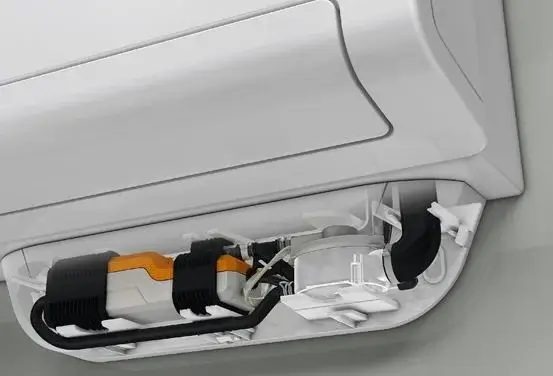An air conditioner is a device designed to maintain comfortable indoor climate conditions. It is capable of cooling the air in the hot season and heating it in the cold season. Air conditioners are widely used in homes, offices, shopping malls, automobiles and other places.
The operating principle of an air conditioner is based on the cycle of evaporation and condensation of refrigerant. Inside the device there is a compressor, evaporator, condenser and expansion valve. The compressor compresses the refrigerant gas, increasing its pressure and temperature. The gas then enters the condenser, where it cools and condenses into a liquid, releasing excess heat and producing cool air. The liquid then passes through the expansion valve, where the pressure is reduced, and enters the evaporator. Here it evaporates and cools the surrounding air, creating a comfortable temperature in the room.
There are several types of air conditioners, including window, wall, mobile and cassette systems. Window air conditioners are installed in special holes in a wall or window and serve one room. Wall-mounted air conditioners are also used to cool and heat one room, but they are mounted directly on the wall. Mobile air conditioners can be moved from one room to another and connected to a window or a special outlet to remove hot air. Cassette systems are suitable for cooling large rooms and are installed in the ceiling with air distribution through special grilles.
The use of air conditioners has a number of advantages. They help improve air quality by filtering dust, pollen and other contaminants. Air conditioners also create comfortable conditions for work and rest, providing optimal temperature and humidity. They help prevent overheating of electronic equipment and preserve people's health, especially during periods of fire danger and high temperatures. In addition, air conditioners can also be used to humidify the air in dry climates and suppress allergic reactions.
Operation of an air conditioner: principle and types
Principle of operation of an air conditioner
The main task of an air conditioner is to cool the air. To do this, the device uses a refrigerant - a special substance that can quickly absorb and release heat. The air conditioner operation process can be divided into several stages:
- Intake of fresh air and filtering it from dust and microorganisms. This is done using built-in filters.
- Air cooling and dehumidification. The hot air enters the evaporator, where the refrigerant evaporates, absorbing heat from the surrounding air. The result of this process is air cooling.
- Removal of excess moisture. During the process of evaporation, the refrigerator also dehumidifies the air, removing excess moisture from it.
- Circulation of cooled and dehumidified air throughout the room. Cooled air is supplied back into the room through the outlets.
- Temperature control. The air conditioner maintains the set temperature in the room using a thermostat.
Thus, thanks to the operating principle of the air conditioner, you get cool and dry air, creating comfortable conditions in the room.
Types of air conditioners
There are several main types of air conditioners, which differ in their characteristics and scope of application:
- Window air conditioner. This type is installed in a window or a special hole in the wall and performs the function of cooling the room. It is compact, inexpensive and suitable for small spaces.
- Mobile air conditioner. This type can be moved from one room to another and does not require permanent installation. It is well suited for rented or temporary premises.
- Cassette air conditioner. This type is installed in the ceiling and has different air flows, which allows cool air to be evenly distributed throughout the room.
- Duct air conditioner. This type is installed in the ceiling or wall, and the air is distributed through special channels. It is suitable for large rooms and allows you to maintain the aesthetics of the interior.
Each type of air conditioner has its own advantages and can be selected depending on the characteristics of the room and the required functions.
Operating principle air conditioner
The operating principle of the air conditioner is based on the use of refrigeration equipment. It consists of several main components, including a compressor, evaporator, condenser and expander. The refrigerant circulates within the system and goes through various stages of the cooling and heating process.
In the first stage, the compressor compresses the refrigerant, increasing its pressure and temperature. The hot gas then enters a condenser where it cools into a liquid. The refrigerant transfers heat to the environment, so the air around the air conditioner is cooled.
The refrigerant then flows through an expansion valve, which determines its speed and pressure. After that, he goes





